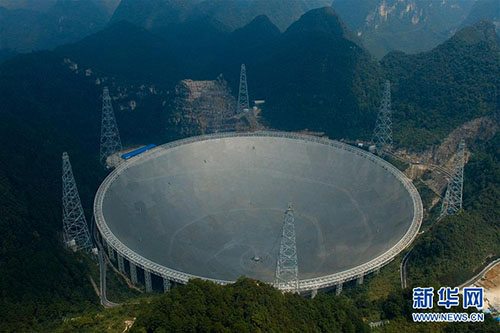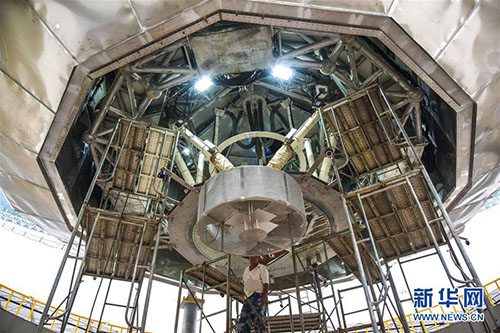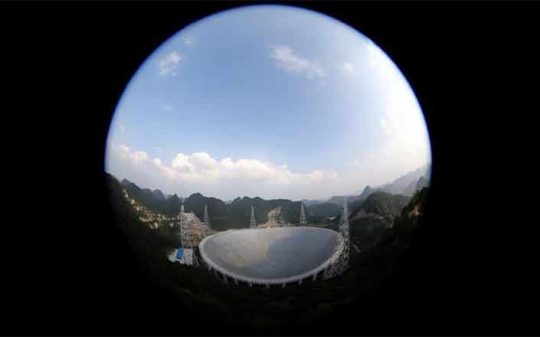China just switched on the power to the world’s largest radio telescope, propelling the country into the forefront of the hunt for extraterrestrial life.
The entirety of the scientific world is ramping up its search for planets that could potentially harbor life and the globe’s second largest economy wanted part of this endeavor. Lead part.
In 2011, China began clearing a large swath of land in a rural region of the Guizhou Province to make room for the telescope. Over 9,000 residents of the remote mountainous region were forced to relocate in order to ensure that the area remains free from electromagnetic interference. You can’t have microwave ovens giving false positive readings, like in the case of the Parkes Observatory in Australia. Each displaced person netted around $1,800 for their troubles. Science comes at a cost, especially in communist China.
The Five-hundred-meter Aperture Spherical Telescope or FAST is a testament to the ingenuity and technological prowess involved in mankind’s quest to understand its place in the universe. Roughly the size of 30 football fields, the FAST ensemble will prove much more effective than the former record-holder for largest radio telescope in the world, the Arecibo Observatory in Puerto Rico.

It is huge.
Incorporating over 4,500 individual panels, the largest radio telescope in the world is said to be capable of detecting radio signals located over 1,000 light-years from Earth. If any of the planets it lays its giant, cold eye upon is home to a technologically advanced civilization, FAST will probably detect it. However, contacting said civilization would be harder than simply distinguishing it from the background radiation. Even if it were located ‘only’ 20 light-years away, sending a message and then waiting for the reply – if any – would take the better part of half a century. Unless they can get here faster than light does. But if we bring FTL travel into question, we’re already talking about a culture that is far more advanced than we are. As Stephen Hawking pointed out on numerous occasions, meeting such a civilization would most likely end bad for us. So maybe cross your fingers but don’t hope too hard.
With an estimated cost of $180 million, the 1,640-foot wide telescope is a scientific wonder with a field of view twice the size of that of its counterpart in South America. “FAST’s potential to discover an alien civilization will be five to ten times that of current equipment, as it can see farther in darker planets,” researcher Peng Bo told Chinese press agency Xinhua.

Still, FAST’s capabilities extend beyond the search for alien life. There are a lot of radio sources out there that could offer better insights on how the universe formed and evolved, how stars and their adherent planets roll and how everyone’s favorite matter gulpers – black holes – well, gulp matter.
“The project has the potential to search for more strange objects to better understand the origin of the universe and boost the global hunt for extraterrestrial life,” said Zheng Xiaonian, deputy head of the Chinese Academy of Sciences’ National Astronomical Observation.
The Five-hundred-meter Aperture Spherical Telescope is just one of several space-oriented projects China has been developing these past few years. It is obvious president Xi Jinping regards space exploration with a favorable eye and his actions have turned the country into the leader of deep space scrutiny. Who knows, maybe prioritizing the stars will eventually pay off.
Photo credits FAST









